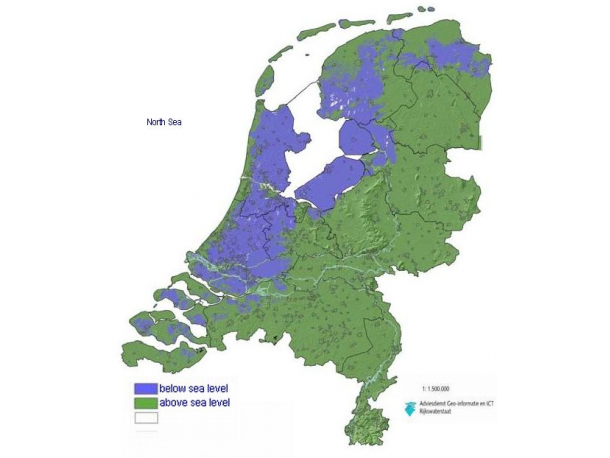
The Netherlands Goes Brackish
This is a poor translation of the title of a symposium I attended in Leeuwarden in The Netherlands. The real title in Dutch ‘Nederland Verbrakt’ is a play on words and has two meanings. Verbrakt can mean break, but can also mean brackish as in water. If you understand Dutch or want to try your hand with Google Translate, the symposium website is here.
The definition of a river delta is where a river flows into an estuary where salt and fresh water mix, then out to sea. In reality the situation is not normally so straight-forward, as rivers normally have forks or flow together. A river delta is normally therefore considered as the collective area where related rivers flow to sea.
The Netherlands has a number of related rivers flowing through it, including the Meuse, Rhine, Waal, Scheldt, IJssel and others. At one point the Emse flows out in the northeast of the country along the German border, and the confluence of the Scheldt, Rhine and Meuse flows out in the southwest along the Belgian border. Water is also pumped out from the IJssel river via the IJssel lake, through the afsluitdijk, in the middle of the country. Historically water flowed through the country in almost all directions. This means technically the entire Netherlands is a single river delta system.
The Netherlands has a long history of floods. In addition, as a river delta it’s also one of the most fertile areas in the world for agriculture, and this agriculture has been expanded by the reclaiming of land from the sea. Land reclamation and flood defenses means the country has been nearly completely enclosed in dikes, and a system of canals ensure excess water is drained from the land and pumped out to sea. This is the so-called water management that the Netherlands is very well known for.
The country has paid a very high price for this water management. The water management along with ground water consumption is causing the country to sink, together with rising sea levels this means higher dikes are needed and more surface water needs to be drained and pumped to sea, which in turns makes the country sink even more. Because the coastline is protected by dikes, the inland water has become ‘sweet’ or free from salt and reduced or eliminated storm surges. This has caused massive changes in ecosystems, generally causing them to become seriously degraded.
Historically many dikes were built and land reclaimed in very random ways, without a lot of thought to what they were doing. In some cases it was done for nationalistic reasons, with one group of people trying to punish another. Nearly everyone accepts there’s no going back to the way things were before water management. In recent times however there have been efforts to fix some of the worst mistakes, modernize water management, making it as environmentally friendly and as sustainable as possible.
For example in recent decades they have been reflooding reclaimed land that was too far below sea level, and thus requiring too many resources to maintain.
In the latest phase of modernizing water management, many areas are going brackish. Others are changing with more of an environmental focus.
North Coast
Along the north coast of the country they are rebuilding the large dike called the afsluitdijk. Sea level rises mean the dike has to be built higher. At the same time they are changing the design, including the addition of a fish migration river. In the future they will try to let water drain more often by opening the dike, rather than mostly pumping like they do now. They will also open the dike to let in sea water when they can.

In the village of Holwerd, they are transitioning to ‘Holwerd aan Zee’. They are creating a breach in the nearby dike, and letting sea water flow in. With this they intend to create an estuary and a new nature area.
In the Lauwersmeer, which I wrote about before, there are plans to first develop the local economy, but also necessarily enhance the nature of the area. As part of enhancing the nature, they also plan to allow salt water to enter through the dike. It remains to be seen how long this takes or if it really happens, but this would be a very good thing, and a very long time coming.
Southern Delta Area
In Grevelingen and Haringvliet (two areas of this part of the delta), which have been closed with dikes, they are already letting in sea water from time to time, and also taking other steps to enhance the nature there.
River Deltas in Crisis
Many river deltas around the world are in crisis. For example the Mississippi river delta near New Orleans and the Mekong delta in Vietnam. The situation the The Netherlands is not terribly different from these areas. Letting salt water into parts of the country will help some, but a lot more is going to need to be done in the long run.

